"My work was... How would I put it?", asks Yrjö Kukkapuro.
"Constant contemplation" he answers.1
With the exhibition Yrjö Kukkapuro – Magic Room Espoo Museum of Modern Art, EMMA, invite us all to contemplate on Yrjö Kukkapuro's contemplations.......
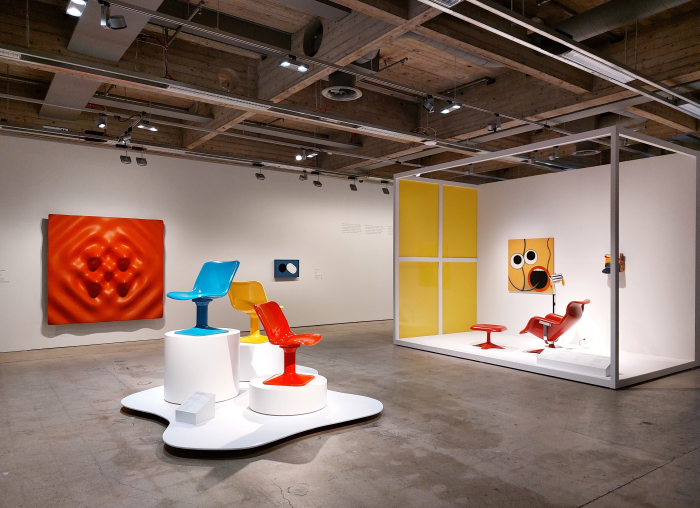
Born in Vyborg, then Finland, now Russia, on April 6th 1933 Yrjö Kukkapuro enrolled in 1955 at the Institute of Industrial Art, Helsinki, a school, then, housed in the city's Ateneum art museum and a school which can lay claim to being one of the cradles of post-War design in Finland, counting as it does many of Finland's most interesting and important 20th century designers amongst its staff and alumni. Following his graduation in 1958 Kukkapuro established his own studio, his own Contemplation Room, a studio which since 1969 has been housed in a concrete and glass construction in the municipality of Kauniainen, squashed between Helsinki and Espoo; a concrete and glass construction designed by Yrjö and his wife Irmeli, together with the engineer Eero Paloheimo, that is very reminiscent of the thin wall concrete shell constructions of an Ulrich Müther, a Félix Candela or a Pier Luigi Nervi. And a concrete and glass construction, one learns in Magic Room, that was originally planned as a fibreglass and glass construction before costs forced a change of plan, and which thus allows one to understand it as re-imagining of thin wall concrete shell constructions in context of a novel material.
A material that, as Magic Room elucidates, was Yrjö Kukkapuro's material of choice in the early stages of his career: the opening chapter of Magic Room greeting you in the form of the 1965 414 side chair, part of a family of 1960s fibreglass chairs we once compared with a cubist duck, a comparison having seen a flock of them in Espoo we stand by, and which in no way should be understood as a criticism, far from it, with their self-assured, but not egotistically or overbearingly so quadraticness and tangible physical presence they are a very nice alternative position to that of that other Finn, Eero Saarinen's, decade older Tulip chairs who in their seeking for filigree transience echo the more florid aspects of Art Nouveau Kukkapuro's 414 rejects, while respectfully acknowledging its contribution to the path thus far travelled. As does Kukkapuro's 1964 fibreglass, leather and metal Karuselli lounge chair, a work one also meets in the opening chapter of Magic Room, a work that is, arguably, Kukkapuro's best known work, and a work which, according to popular (hi)story, and which as with all popular (hi)stories may or may not be the whole truth, arose after Kukkapuro fell backwards into a snow drift and found the involuntary sitting position he was forced to adopt very comfortable, and so sought to develop a chair akin to sitting in a snow drift. Albeit a snow drift that rocks and swivels: very much like a gyroscope, Karuselli, as its name tends to imply, allows movement in any number of directions at once, and thereby is one of only very few chairs where over excited use can lead to motion sickness. Which again isn't a criticism. Far from it.
Then, and as so oft in (hi)story, the 1960s ceded to the 1970s and with it the oil crises; crises which not only saw synthetic plastics cease to be the cheap material they had been, a cheapness which had greatly aided and abetted their rise in the immediate post-War decades, but crises which also occurred in context of the growth of an increasingly loud questioning of the ecological responsibility and sustainability of oil based synthetic plastics. Or as Kukkapuro recalls in the film that runs on constant loop in Magic Room, "people told me that since I was using plastic in my chairs, I was committing a crime against humanity. So I stopped it right there and started working with plywood instead."
Amongst other types of wood. Magic Room presenting works by Kukkapuro in, for example, rowan, alder, bamboo and hockey stick. The latter a material inspired by the sight of a broken Titan ice hockey stick, one of those moments of unexpected, spontaneous inspiration when, as Kukkapuro opines, "you see a nice piece of metal or plywood, [and] your eye begins to develop stuff with it". Kukkapuro developing an ice hockey stick chair that is a very nice twist on the, in all probability apocryphal, story of Marcel Breuer being inspired by bicycle handle bars to employ steel tubing in furniture; an ice hockey stick chair that introduces, and very efficiently elucidates, various formal, aesthetic and constructional aspects that are of such importance in the Yrjö Kukkapuro oeuvre.
And an ice hockey stick chair, and a snow drift lounge chair, that also link very nicely into Postmodernism, that pigeon hole into which Yrjö Kukkapuro is so often, and so automatically, placed, but which as Magic Room elegantly elucidates is far too simple. And greatly unfair. Both on Yrjö Kukkapuro and on ourselves.
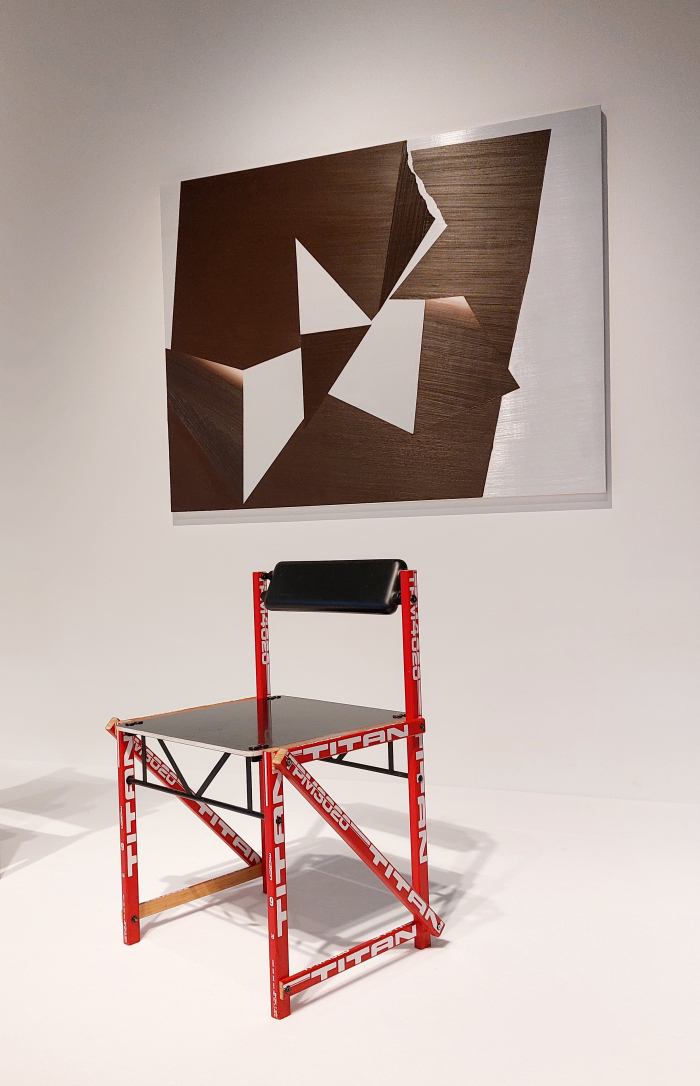
Taking its title, and its inspiration for its exhibition design, from an exhibition concept Yrjö Kukkapuro developed in the 1980s, a concept which in many regards began with his contribution to the interior of the, then, new Lahti City Theatre, a theatre for which Kukkapuro also designed the auditorium chairs, and a concept which premiered in Kukkapuro's design for an exhibition of his works at the Binnen gallery, Amsterdam, in 1987 and which, taking its cue from early 1980s Post-punk, experimental, installation art is, essentially, a stripped back space illuminated by raw, exposed, lighting, Magic Room takes you on a chronological and thematic tour through the neigh on seven decades of Yrjö Kukkapuro's career, whereby you quickly learn that the two are, largely, the same; a tour that in the course of its progression allows for more nuanced appreciations of Kukkapuro's positions, approaches, work, and the contemplations from which they arose, than are often allowed.
Allows access to considerations on, for example, Yrjö Kukkapuro's contemplations on ergonomics, a subject, one learns, he was introduced to as a student by the interior and furniture designer Olli Borg, who in the 1950s and 60s served as a lecturer at the Institute of Industrial Art, as indeed did Kukkapuro at various periods, and who held a class on the research, the then very novel research, of the Swedish doctor, and chair designer, Bengt Waldemar Åkerblom; research which Kukkapuro describes as "a real wake-up call for me", instigating in him as it did an appreciation of the links between sitting and health, an appreciation that chair design was about more than aesthetics. Kukkapuro also recalling, we very much hope with no exaggeration, that after that lecture, "I ran out and exclaimed: now I know why I'm doing this job!" Yet ergonomics which for all their importance in Kukkapuro's work and in his understandings of his work, the why he does the job he does, he only very seldomly highlights, only very seldomly actively informs you that a chair is designed from an ergonomic perspective; the Karuselli being one of the more obvious, one of the more direct expressions of an inherent ergonomic thinking, as is an early 2000s wooden chair on show in Magic Room which with its knobs and levers and grooves is very much in the tradition of the chair as a sitting machine. However, search in Kukkapuro's other works and you will find considerations on posture and seating position; follow, for example, the lines of the apparently so stubbornly quadratic fibreglass cubist ducks and you'll find that while quadratic they feature as an inherent and key component of their design, and as with actual ducks, flowing organic curves, while in his later works the often incongruously sloping backrests and disconcertingly obtuse angles between seat and backrest are very deliberate. For all that to eyes atuned to more conventional, traditional, understandings of furniture silhouettes, they may resemble a glaring and avoidable error. Which, ironically, is what more conventional, traditional, seats often are in terms of the sitters health.
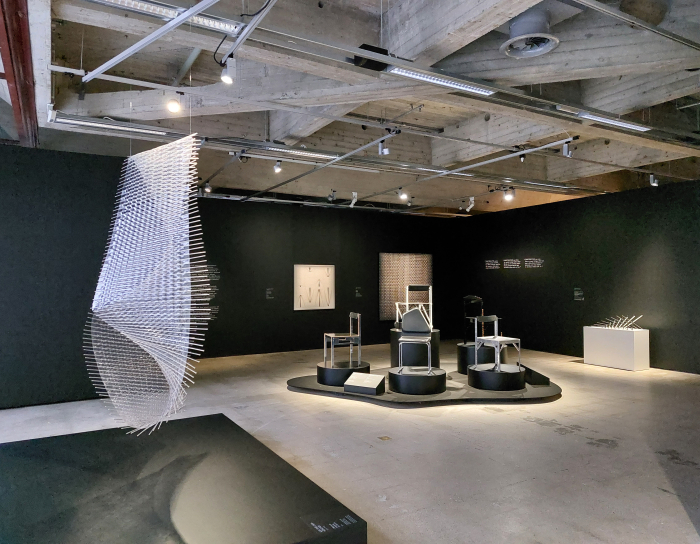
Allows access to considerations on, for example, Yrjö Kukkapuro's contemplations on materials, in addition to the fibreglass and woods of various types, Magic Room also neatly elucidates that metal is and was an important part of the Kukkapuro oeuvre, including steel tubing as employed, for example, in the 1969 Remmi lounge chair, a work which one can, must, consider in context of the marginally older Karuselli, not least in the manner in which Remmi reduces the footprint of the Karuselli without questioning the validity of the form, if one so will melts a large part of the snow drift to leave just the essentials for a comfortable, ergonomic, sitting experience, and which in doing so can be considered both as a moment in a movement away from the volume and scale of Kukkapuro's 1960s works towards the formal reduction and visual lightness of his later works, and as the origin, a origin, of several structural and formal aspects and motifs regularly employed by Kukkapuro. A Remmi lounge chair that not only employs the steel tubing of the inter-War Modernists but in its use of a variation on, a re-imagining of, traditional tension springs in the upholstering also echoes the so-called Antimott, Anti-moth, system developed by Willy Knoll in the 1920s in context of the demand for more hygienic interiors at that period which informed so much Modernist thinking. And a Remmi lounge chair whose steel tubing, as with all the steel tubing one meets in numerous contexts in Magic Room, was inspired by the steel tubing of the Heteka sofa bed, an object, a concept, developed in the 1930s that is one of those very important moments in the (hi)story of furniture and interior design in Finland, yet one that tends to be hidden by those all too easy contemporary, marketing led, understandings of furniture and interior design in Finland, indeed the whole Scandinavian region, that narrowly focus on nature and natural materials at the expense of the wider picture. Understandings that also tend to hide a Yrjö Kukkapuro, mean you can't see a Yrjö Kukkapuro for the birch.
In addition to steel tubing one also regularly finds metal employed as thin quadratic stabs, if one will Titan ice hockey sticks in metal, and also as right-angled aluminium profiles, a material very satisfyingly employed in a variation on Kukkapuro's Nelonen chair in which, and as a delightful, delicious, play, we're assuming and very much hoping, on those industrial metal shelving systems where the horizontal shelf supports slot into perforations in the right-angled verticals, the phrase "Aluminium 4" — Nelonen is a Finnish term for 4, Aluminium 4 = Aluminium Nelonen — is cut into the legs. But then not employed as the responsive, variable, user-orientated construction feature it imitates. Is purely employed as decoration. Which is very much sticking two fingers up to the Functionalist Modernists while not embracing the Art Nouveauists and Art Decoists. And a Nelonen chair, a construction and formal format much used, and one presumes, much enjoyed by Kukkapuro, also presented in Magic Room in plexiglass, a Nelonen which under the bright lights of EMMA beautifully, poetically, demonstrates that way plexiglass absorbs, transports and re-emits light thereby apparently glowing as if it were a light source. Is, if one will, an alternative interpretation of the interplay of light and shadow and form and space that is and was the origin of the Magic Room idea.
Plexiglass which also features, alongside tubular steel, in a 1969 cantilever chair which takes up Marcel Breuer's vision of us one day sitting on a "resilient column of air"2, and not only allows one to approach that day via, as Breuer did, the inherent elasticity of the cantilever, but also to approach that day via the transparent seat shell, a conceit which means you are almost literally floating on air. Or relaxing in the immateriality of a snow drift. And a transparent chair very neatly set in Magic Room beside a chair made from mirrored glass, an equally transient and otherworldly chair, another chair which offers an ever changing colourscape and sensory spectacle, albeit one which rather than offering an endless vista through it, reflects, distorts and corrupts the space in which it stands. And thus two chairs which help elucidate that a chair is never a passive component of a space, and the importance of understanding how any chair relates to, contributes to and influences the space in which it stands.
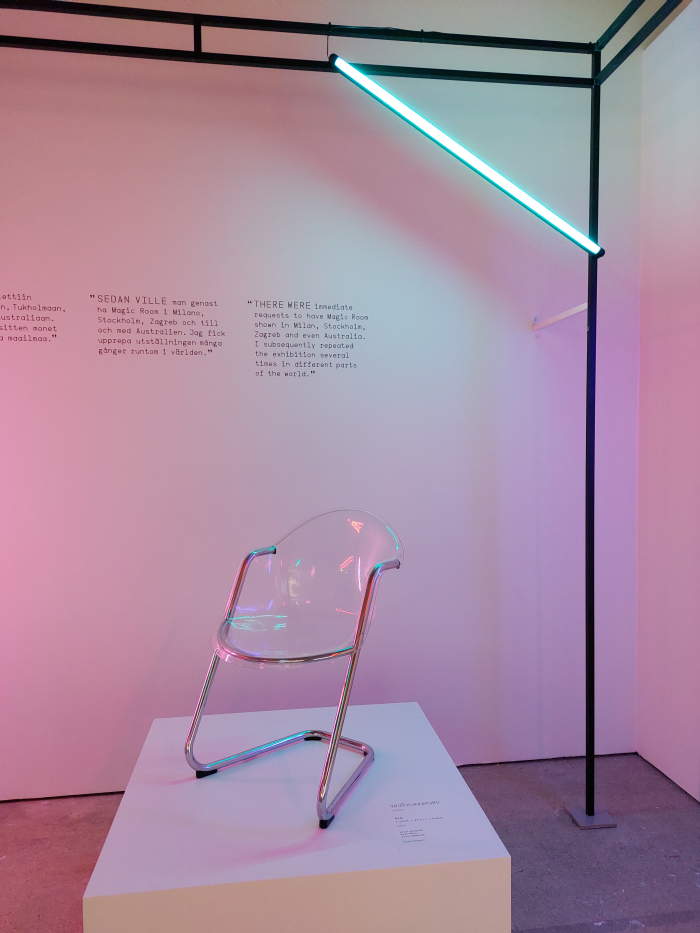
Allows access to considerations on, for example, Yrjö Kukkapuro's contemplations on construction, on Yrjö Kukkapuro as a designer who makes no effort to hide the construction of his works, who employs a very brutalist approach, an approach which, as with Brutalist architecture, embodies that sense of honesty that, for example, the Rowac-Schemel also brings with it, that position where "when you look at one you immediately understand how everything is put together, you see every single connection", and that very much in contrast to the carpentry of so much wooden furniture from Denmark, those, apparently, jointless wooden objects that so easily and lazily stand as the de rigour definition of the abhorrent, and very dishonest, marketeers "Scandinavian design"; and a honesty of construction, a showing of its workings, that can also be found in the wooden furniture of those other Finns, Alvar and Aino Aalto, who also made no great effort to hide the joints in their work. And a principle and an approach that also finds a further inter-War echo in, for example, the furniture of a Piet Klaarhamer or Gerrit Rietveld, or in Marcel Breuer's so-called Lattenstuhl, Breuer's first published attempt at an ergonomically correct chair. Albeit in Kukkapuro's work taken to unapologetic extremes.
And a component of his work that although most obvious once Kukkapuro discovered the Titan ice hockey stick as a material and then developed the principles and positions underscoring the ice hockey stick chair in ever new directions, it can also be found, as implied above, in the Remmi lounge chair, and also earlier in Kukkapuro's fibreglass works, not least Karuselli, a work which very much lets you know how its been assembled and what it's capable off, almost warns of the ride ahead, unlike, for example, the Eames lounge chair or Arne Jacobsen's Egg where the movement is carefully concealed from the sitter, much as Thomas E. Warren's late 19th century Centripetal Spring Chair hid its monstrous springs behind an ornate valance.
If an honest approach to construction that can irritate, perturb even, as it once did us. Over the years we've been very, well... how would we put it?...... very rude, quite frankly, about components of Kukkapuro's canon, including the A-509 rocking chair, a work of which we once opined "doesn’t have a clue what it is or wants to be", doubling down with the assertion that "a chair has to have an integrity, a purpose, must understand its function in order to achieve it"3, which we, then, didn't believe the A-509 did. Words of which today we're deeply, deeply, ashamed. 🙇 But we've moved on from that, thankfully, over the years ever more regular exposure to Kukkapuro's works have caused us to reassess, to better appreciate, Kukkapuro's approach and the relationships inherent in and supported by his constructions; and we wouldn't have gotten on the Metro to Espoo to view a room full of Yrjö Kukkapuro's furniture otherwise, we're not sadists. And yes, the A-509 is present in Magic Room, and, yes, we did apologise to it. Profusely. 🙇🙇
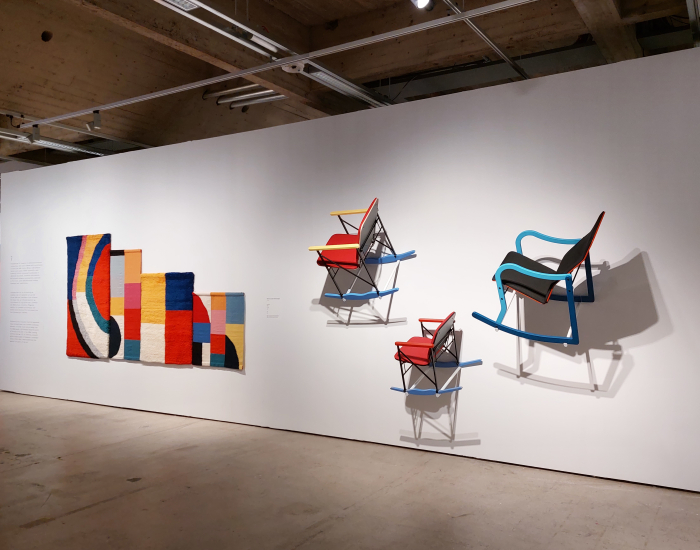
Allows access to considerations on, for example, Yrjö Kukkapuro's contemplations on aesthetics, on Kukkapuro's very graphic aesthetic, a strong graphic aesthetic that is arguably that initial, most direct, impression communicated by Kukkapuro's work, only very few Kukkapuro chairs merge anonymously into their surroundings, the majority greet you with loud HEI!!! And as Magic Room allows you to better appreciate, always have.
A strong graphic element that allows, arguably invites, the easy Postmodern pigeonholing with its associated lack of further exploration. A strong graphic element that, in many regards, arises not just from Kukkapuro's construction and material choices but also his position, pun intended, on ergonomics. A strong graphic element that, as one can follow in Magic Room, relies on the repeated use of an inventory of motifs, much as the stonemasons and woodcarvers and metalsmiths of yore relied on their inventories of motifs for their decorative works; an inventory that includes the regular use of staccato silhouettes, a formal characteristic that often reminds of the crow-stepped gables so popular in Middle Ages Europe, and which through its disrupting and interrupting of the flowing organic lines one expects to see, one has been conditioned to look for, contributes to the irritation and perturbation Kukkapuro's furniture can provoke. And a staccato which also echoes that way the Aaltos simply screwed one piece of wood to another rather than using actual carpentry joints to unite different elements of their furniture, and thereby adding an angularity to the flowing curves; and where it also causes irritation and perturbation through its disruption of the silhouette, if an irritation, perturbation and incongruity in the Aaltos' work that is largely left unspoken for fear of starting a debate. A debate Yrjö Kukkapuro forces, but which we all generally shy away from through the liberal use of a throwaway, Postmodern ¯\_(ツ)_/¯. But which in Magic Room you can't so easily sidestep. And a strong graphic element Kukkapuro reinforces through his liberal use of the primary colours so beloved of a Piet Mondrian and De Stijl, and so popularly, if not always correctly, identified with the Weimar and Dessau Bauhauses.
And a strong graphic element in Kukkapuro's work that is explored in Magic Room not only through the focus the presentation allows on aspects of Kukkapuro and construction, materials and ergonomics but also through the juxtaposition of Kukkapuro's works with works of art. Works of art that can be found throughout all the chapters of Magic Room. Works of art from across the neigh on seven decades of Yrjö Kukkapuro's career. Works of art by the likes of, and amongst many others, Osmo Valtonen, Tarja Pitkänen-Walter or Airi Snellman-Hänninen. Works of art reflective of the various and varied art works that have stood for many years in and around the Kukkapuros' Kauniainen studio. Works of art which help explain and elucidate the spheres in which Yrjö Kukkapuro moved, the influences that informed his thinking, the contexts in which his positions, and his furniture, developed and evolved, the atmosphere in which he contemplated. And works of art which help one locate Kukkapuro, or at least elements of Kukkapuro, in, for example, Kinetic Art, Op Art, Pop Art, Concrete Art, Constructivism, Brutalism, Minimalism, the Installation Art of the Magic Room concept. And for all located in the art of his wife Irmeli: the pair meeting as students, Irmeli studying painting at the Ateneum4, the pair marrying in 1956 while still both students, and remaining together until Irmeli's death in 2022. And who remain together now: when, in the film on constant loop in Magic Room, Yrjö discusses his first meeting with Irmeli in the Ateneum, and announces "it was a wonderful moment", his faces changes, not only breaks out in a smile but it becomes the face of an early 20 something not that of a late 80 something, he's back in that moment, back in 1950s Helsinki. A personal relationship that, as Yrjö tells, was just as important for him professionally; not only was Irmeli an important, and trusted, sounding board for Yrjö in the development of his work, in which context he states "she didn't criticise but analysed", but for all was an influence through her "unfailing sense of colour and form", a sense that can, when all too briefly, be explored in Magic Room via a presentation of woodcuts by Irmeli, that genre with which she is most closely associated. Yrjö continuing that "my own sense of colour certainly comes from her", though as one can understand in Magic Room not expressed in a 1:1 transposition but very much processed through the great many filters that Yrjö Kukkapuro employed and employs.
And processed, as with the myriad components that unite in Yrjö Kukkapuro, via careful, informed, rooted, continuous contemplation.
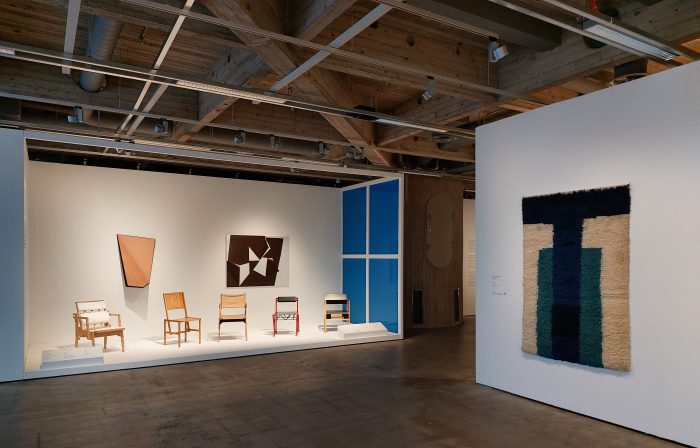
A well-paced and readily accessible presentation Magic Room very much helps one better approach Yrjö Kukkapuro as a designer, as a designer not so much of chairs, but as a designer through and via chairs, who used chairs as a conduit as much as something to sit on; Yrjö Kukkapuro as designer, much like the Kinetic Art of a Osmo Valtonen on show in Magic Room, always in motion because the world around him is always in motion, and a designer who in order to communicate with that world developed his own language, a language, that as with all good languages, evolved and expanded over time, while never losing the delight and wonder of the grammar, formulations and articulations of the past, and thereby helping them avoid becoming anachronisms in the new realities in which they found themselves. And when we speak of language we are, yes, very much deliberately evoking an Ettore Sottsass, that other great all too easily and lazily pigeonholed linguist.
If a designer whose language can be, is, all too often mistaken for incoherent ramblings, much as the language of a Sottsass can be mistaken for manic shouting; something we know from bitter experience. And because of the journey we've taken to Yrjö Kukkapuro and his work, because of our experiences with and our appalling, unforgivable, rudeness about Kukkapuro's work, because we know Kukkapuro's work can irritate and perturb when viewed individually, there is a lot to be said for viewing his works en mass. And for all in a largely chronological order. And in the many contexts it arose. And in taking your time. And in viewing the exhibition several times in various directions.
For if you do Magic Room can not only allow you to better approach and comprehend Yrjö Kukkapuro's language, and thereby allow one to communicate with rather than just reading Kukkapuro, but allow you to better site Yrjö Kukkapuro and his work on the helix of design (hi)story, to better appreciate Yrjö Kukkapuro as a moment on that helix. And thereby also to use Yrjö Kukkapuro as a conduit to approaching not only better, more probable, more sustainable, appreciations of that design (hi)story, but more probable, more sustainable, better, appreciations of 20th century design in and from Finland, 20th century design in and from Europe.
And that not least because of the great many echoes Kukkapuro's work illicits. Aside from all the aforementioned connections, we spent a lot of time considering, for example, and amongst others echoes, the unmistakeable parallels to an Erich Dieckmann that one finds in the slanting backrests, the quadratic profiles, the obtuse angles, the familiarly unfamiliar silhouettes, the etc, if Kukkapuro was aware of Dieckmann we no know, we're not even sure we care, although we'd clearly like to get to the bottom if it, to better understand if the similarities are because of an influence, shared influences, or a serendipity. The echo of a Charles and Ray Eames whose works were also, in many but not all regards, about construction, whereas, for example, the plywood chairs are unquestionably about the material, about the use of a novel materials to develop contemporary solutions, they are also about the joints, about the how and why of the construction, while for all the grace and hidden functionality of the Eames lounge chair, look at the backrest construction, there's nothing subtle or refined about it. But its unapologetic brutality doesn't detract from the work, on the contrary. Or compare the Eames House with the Kukkapuro Studio.
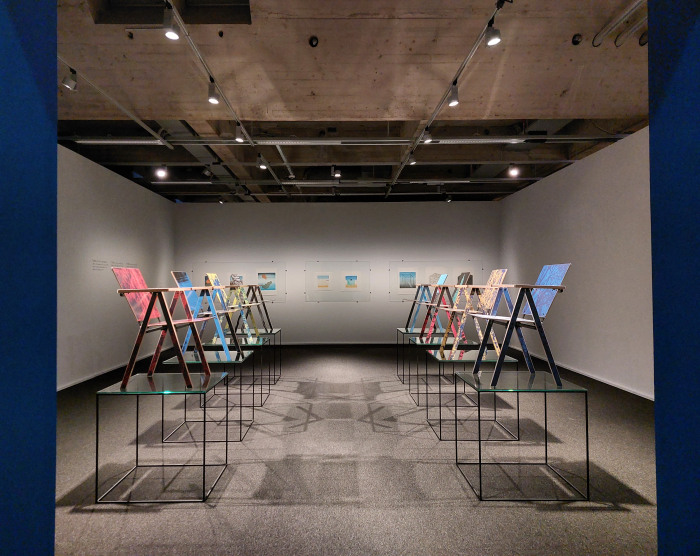
In addition we spent a lot of time wondering if Yrjö Kukkapuro developed his so-called Tattooed Chairs, a vast collection of plywood chairs covered with decoratively, ornately, printed laminate, simply to annoy Adolf Loos. Deciding he probably didn't, but that they certainly would have. Then there's that way Kukkapuro hangs the seat in the frame, a uniting of two apparently incongruous, independent, elements, one of those very regularly occurring motifs and construction principles in his work, one of those regular causes of irritation and perturbation in his work, one that although very obvious in his post-fibreglass works is also at the core of Karuselli, while its presence in the Remmi lounge chair, where one can understand it as a re-imagining of the Karuselli construction, is one of those features that very much define Remmi as a moment in Kukkapuro's development as much as a chair in his portfolio. And a solution also found in that other Finn, Antti Nurmesniemi's, 004 armchair, and arguably also found in the Aaltos Paimio chair, and which in all cases, unquestionably, echoes back to Marcel Breuer's 1925 B3 chair a.k.a. Wassily....... and which, yes, is the fourth time we've referred to Marcel Breuer, which, no, we didn't imagine we'd do before visiting EMMA, but which in the comparisons and contrasts of Kukkapuro's work with the inter-War years Breuer enables, allows one to employ Yrjö Kukkapuro as a reminder that we're all on an ongoing helix where we continually return to the familiar in new contexts and thus with new demands, new requirements, the need for new solutions and approaches which can, should, must, be informed by those of the past, an understanding, for us, embodied in a Bernat Klein's position that design is, amongst other things, having "fun juggling with a number of old solutions until they suddenly click and coalesce into one, beautiful, new solution"5.
And comparisons and contrasts with Marcel Breuer, and by extrapolation the wider inter-War years, which also help underscore that Yrjö Kukkapuro is without question Postmodern, that Yrjö Kukkapuro is a position that wouldn't have been possible without Functionalist Modernism, but isn't restricted by that heritage rather is empowered by it. And it is very much a Yrjö Kukkapuro Postmodern. His moving beyond Functionalist Modernism based on his appreciations and positions, as a consequence of his contemplations, yet without losing sight of that which preceded him. While the scope and variety of Magic Room underscores that that is far too simple an understanding. Is but the beginnings of an understanding. Not the end.
If for all its scope and variety of Magic Room it can be but an introduction; there is, one very much sense as you wander around the space, so much more to be shown and so many more stories to tell, so much more furniture to engage with, interior design projects to discuss, teaching to analyse, students to question, artists to consider.
And for all so much more in terms of the nature and consequences of the creative interplay between Irmeli and Yrjö to be explored; Irmeli had her own artistic career, wasn't just the wife of Yrjö, and the output of any individual member of a creative couple is invariably influenced and informed by the other, it can't but be, it's a two way thing, it's inevitable, yet remains one of those things that is overlooked in the study of art and design, with its stubborn adherence to the traditional focus on the artistic genius in their own bubble, normally the male artistic genius, obviously; however, and as can be understood at the other end of EMMA in the permanent exhibtion space dedicated to those other Finns, Tapio Wirkkala and Rut Bryk, considering any creative couple simultaneously as a couple and as individuals, allows for much more rewarding and informative appreciations.
But that can come, first we all need an expansive introduction to a designer far to often overlooked in the (hi)story of design, a designer all too easily and unquestioningly pigeonholed, a designer all too unfairly defined by one of his earliest works, but a designer who can teach us all a lot about functionality, sustainability, responsibility, about design, about furniture, and for all about relationships with furniture.
Can if we're given the space and time to contemplate Yrjö Kukkapuro's contemplations as carefully, informedly and rootedly and as he expressed them.
If we're given a Yrjö Kukkapuro Room.
Yrjö Kukkapuro – Magic Room is scheduled to run at Espoo Museum of Modern Art, EMMA, Ahertajantie 5, Tapiola, Espoo until Sunday January 28th.
Full information, including information on opening times, ticket prices, current hygiene rules and the accompanying fringe programme can be found at https://emmamuseum.fi
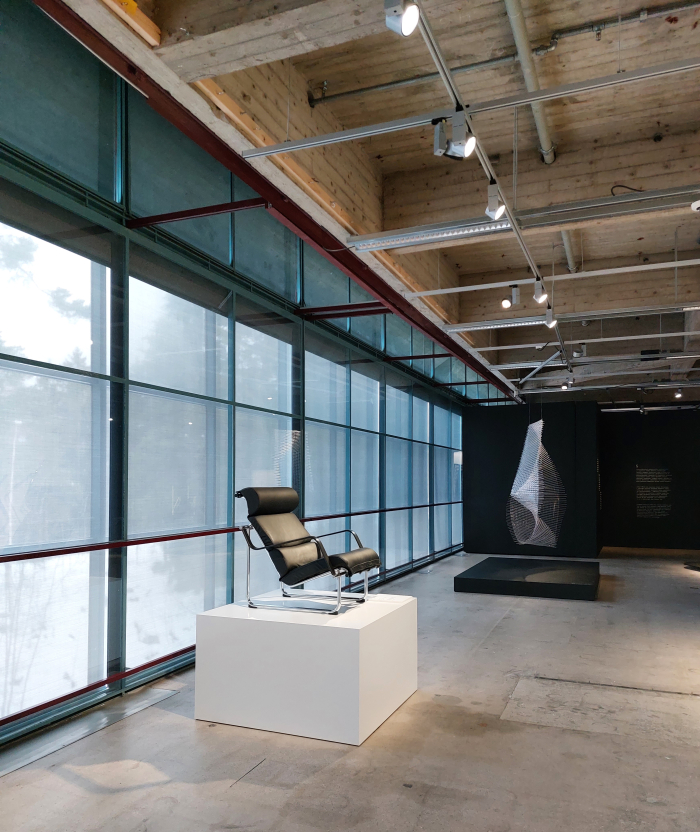
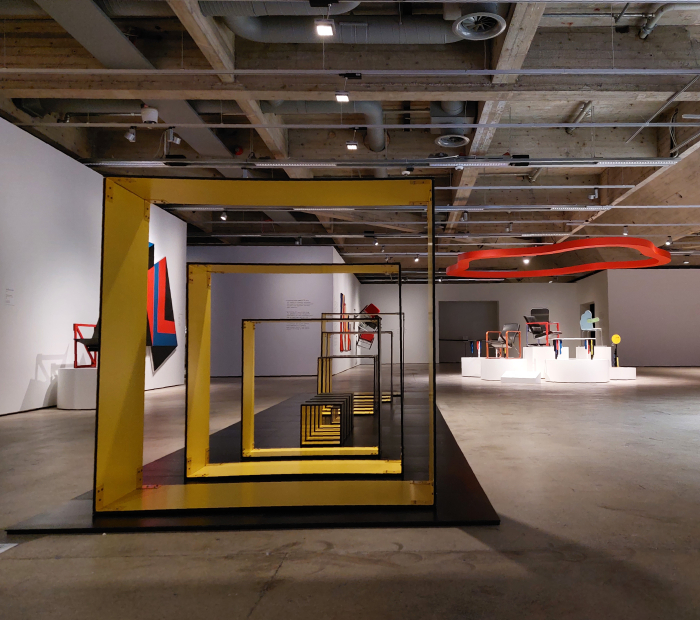
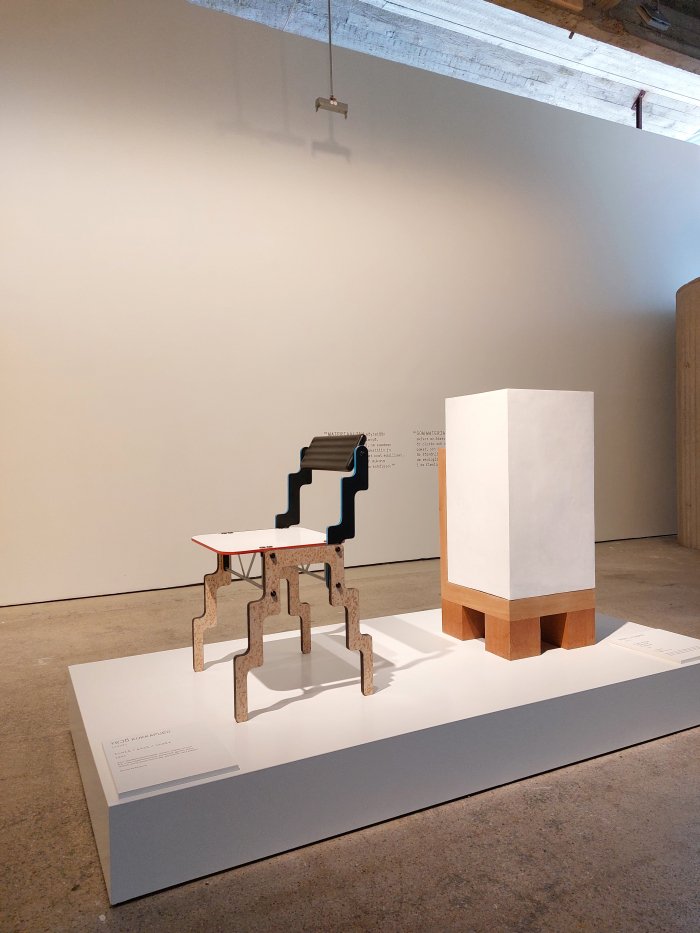
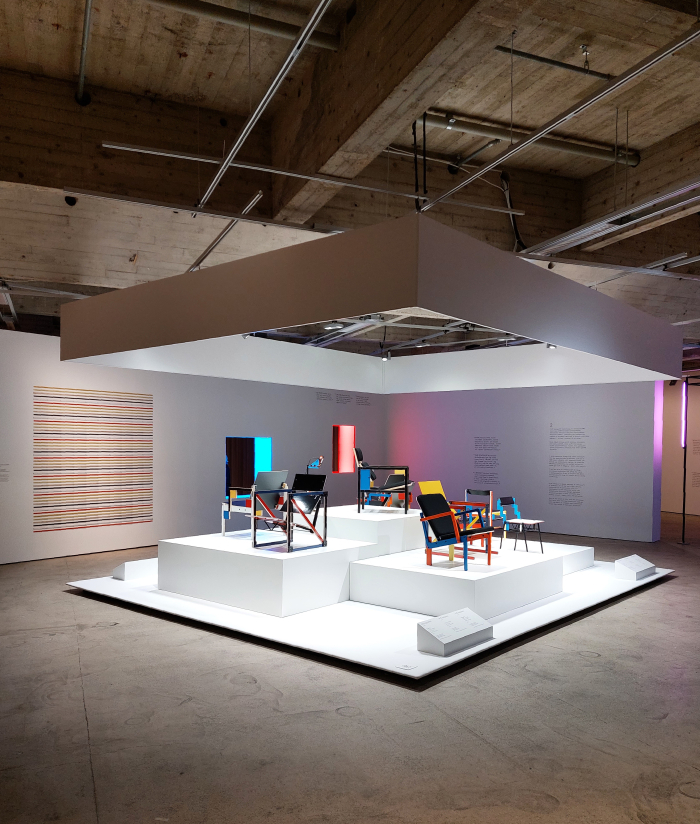

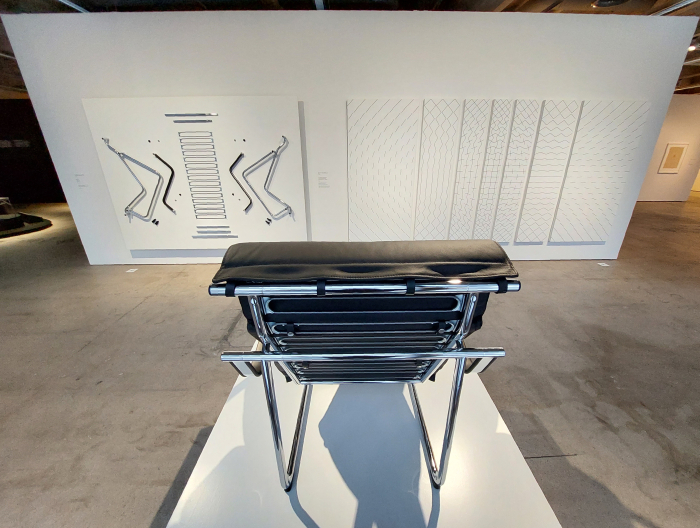
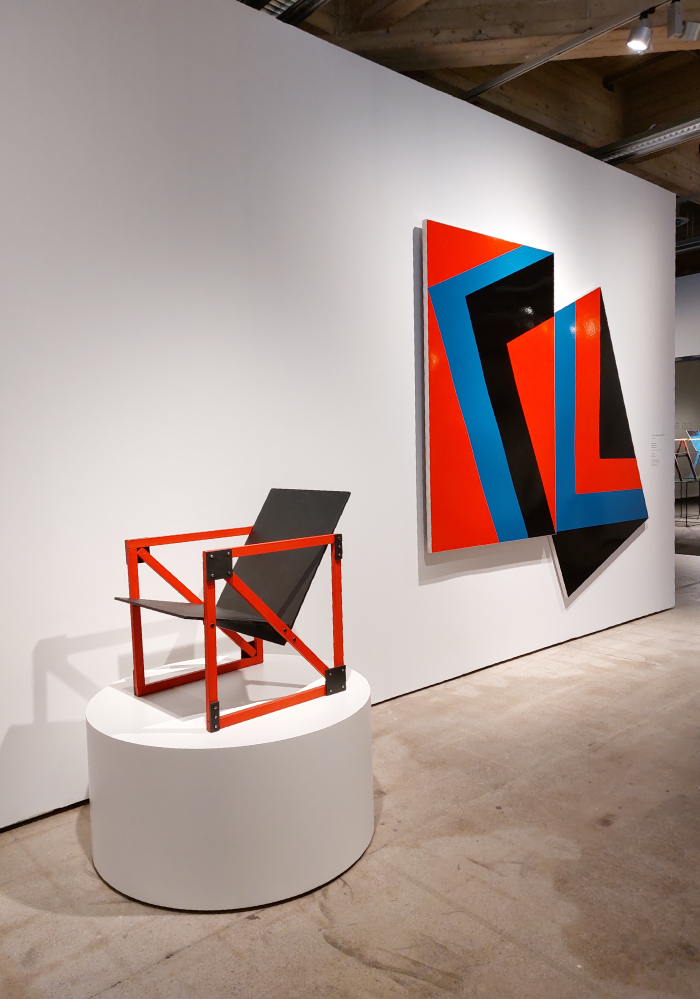
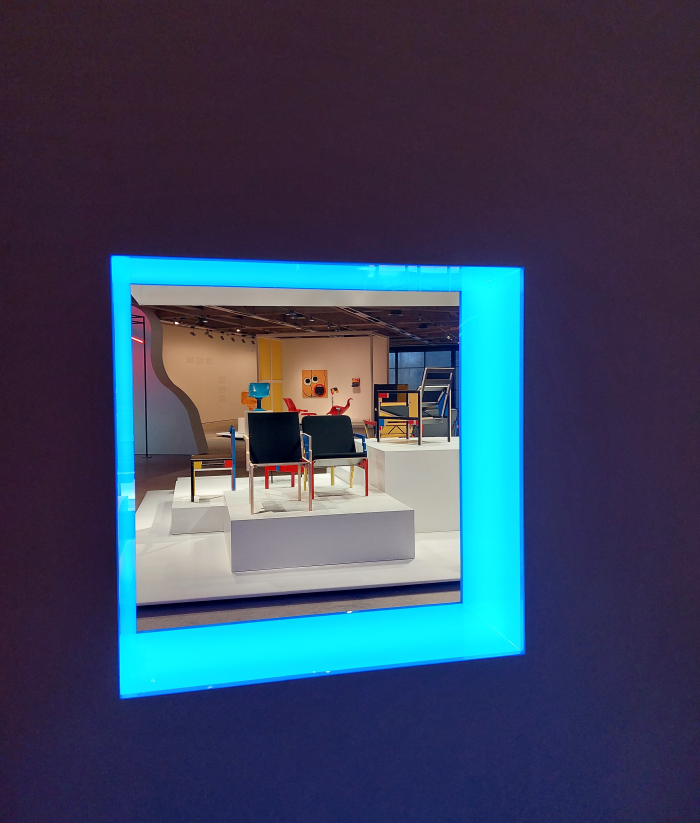
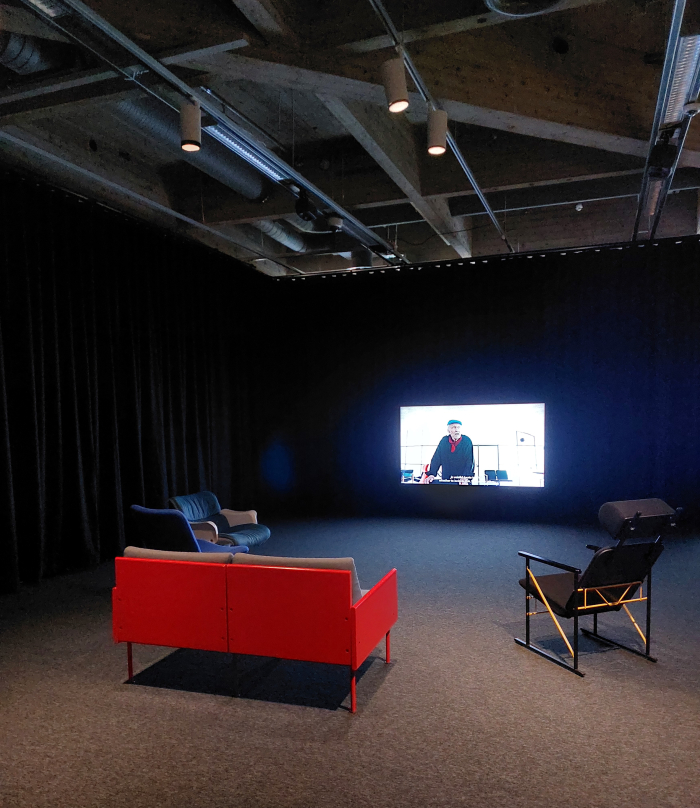
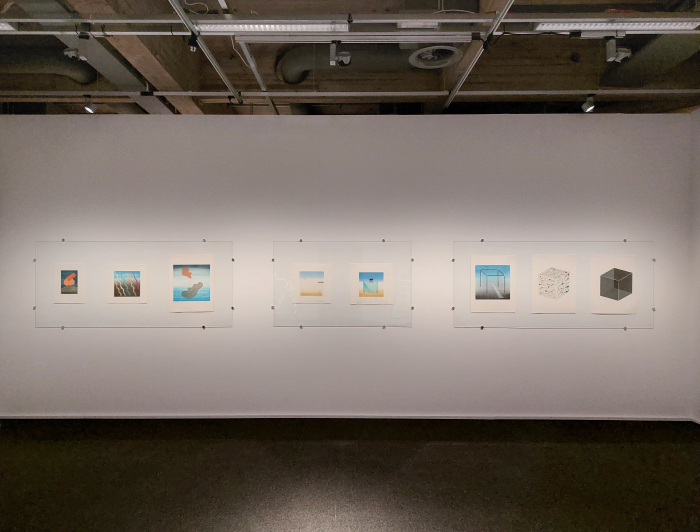
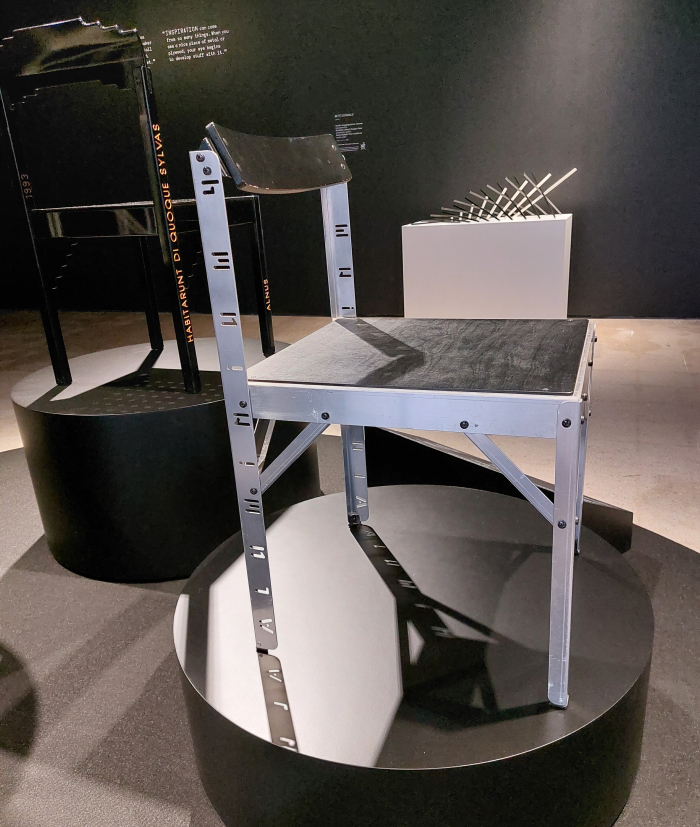
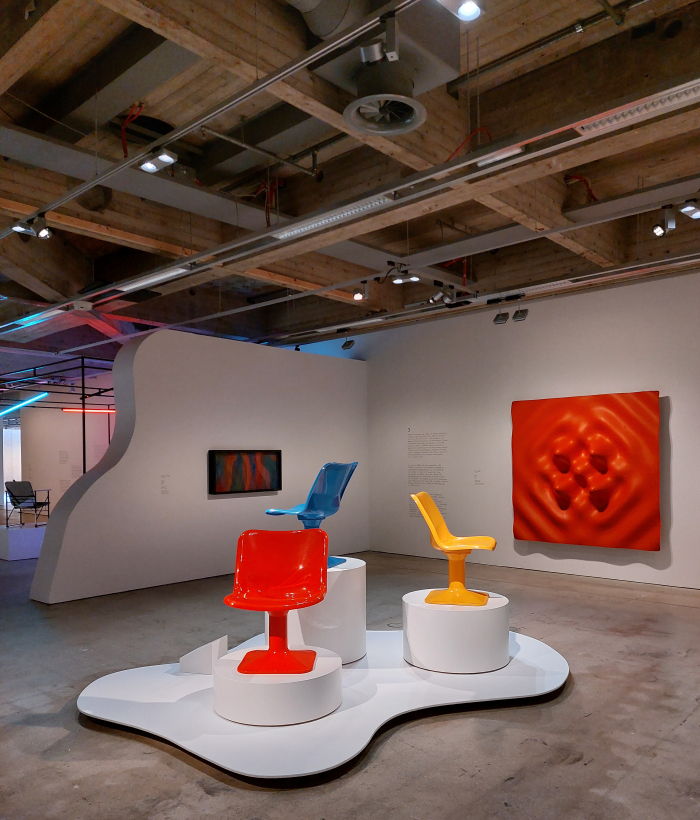
1and all other quotes unless stated, or in the case of the Rowac-Schemel linked to, are to be found in either the film presented in Magic Room or on wall texts. This particular one is at the start of the film.
2Marcel Breuer, eine bauhaus-film. füng jahre lang, bauhaus 1, December 4th, 1926
3The offending post was that from Echoes – 100 Years in Finnish Design and Architecture at Felleshus, The Nordic Embassies, Berlin. And we compounded things two years later by concurring with ourselves from 1980s – A new era in furniture design at The Museum of Furniture Studies, Stockholm, whereby by then we knew a little better, and the context of its viewing must have triggered something deeper within us. And so we'll blame tiredness for the latter, it was during Stockholm furniture fair, we're permanently exhausted. For the original there is however no excuse.
4As far as we can ascertain Irmeli and Yrjö attended the same college, Irmeli a year above Yrjö. But we're not a 100% certain, not least because the answer is in Finnish, which isn't the most accessible of languages. And freely translatable.There was an art school housed in the Ateneum, but we don't think Irmeli went there, we think she attended the same institute as Yrjö. But we're not sure. Once we are we'll update.
5Bernat Klein, Design Matters, Secker & Warburg, London, 1976 page 3